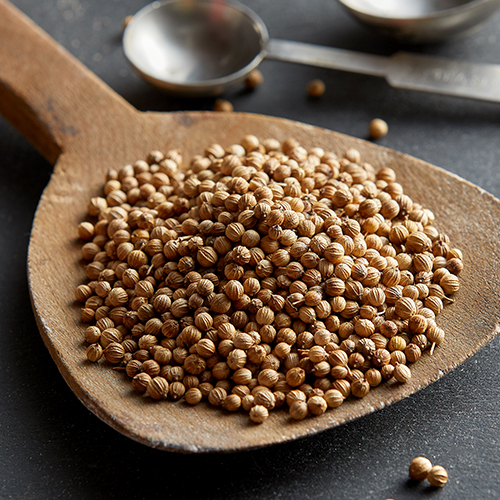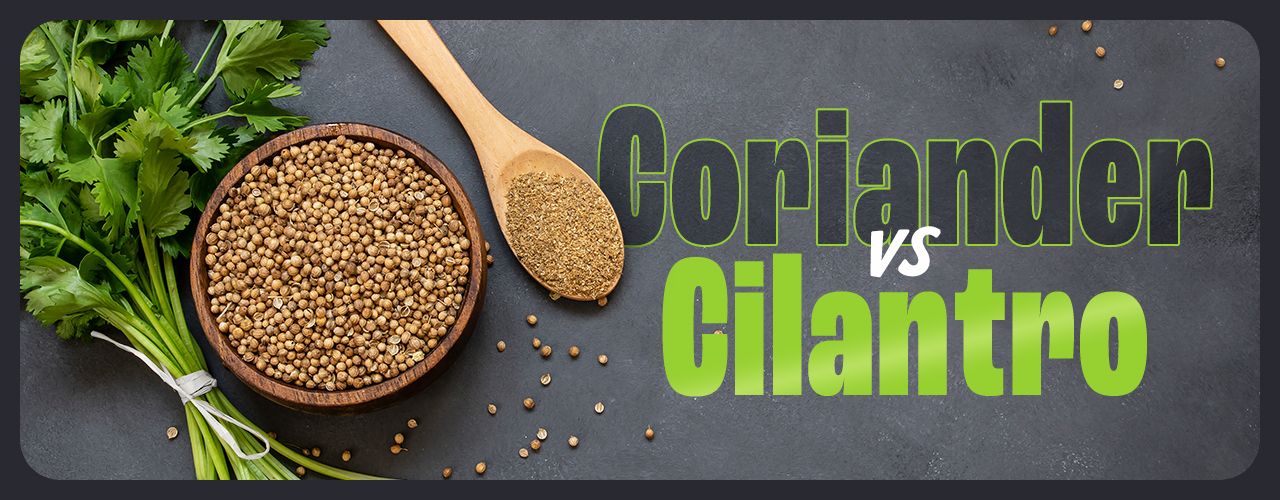As global dishes continue to dominate restaurant food trends and you explore new international recipes for your menu, you may run across some rare spices and spice blends you’ve never heard of before. These spices are the key to achieving the signature flavors in popular types of global cuisine. We’ll take you on a tour of unique spices from around the world, describe their flavors, and explain how they are used.
Shop All Wholesale Spices
Click any of the spice names below to learn more:
Asafoetida
Amchur
Chaat Masala
Fenugreek
Garam Masala
Green Cardamom
Kala Namak
Nigella Seed
Aleppo Pepper
Baharat
Berbere
Dukkah
Harissa
Ras el Hanout
Urfa Biber
Za’atar
Chinese 5 Spice
Galangal
Golden needles
Makrut Lime Powder
Sichuan Pepper
Star Anise
Togarashi
Types of Indian Spices
You probably know that Indian cooking relies on spices like cumin, turmeric, and curry powder, but what about the spices you don’t recognize? This list of spices includes the secret ingredients you need to create authentic Indian dishes.
1. Asafoetida
Asafoetida is a secret ingredient of Indian cooking that highlights the other spices in a dish, similarly to how salt brings other flavors forward. It has a strong, pungent smell and mimics the flavor of onions and garlic. You only need a pinch or two of the potent yellow powder to achieve the desired effect, and it’s wise to seal the container right away or the overpowering aroma will fill your kitchen. Asafoetida is made from dried resin tapped from the roots of an herb in the celery family.
Asafoetida Form: Powder
Asafoetida Flavor: Sulphuric, pungent, similar to garlic and onions
Asafoetida Uses: Adds savory, umami flavor to vegetable dishes
Asafoetida Cuisine: Indian
Asafoetida Pronunciation: As-uh-fuh-tee-duh
Other Names for Asafoetida: Hing, heeng, asafetida
2. Amchur
Amchur is the powdered form of unripe, dried green mangoes. It’s used in Indian cooking to add tangy, citrusy flavor to dishes without any of the moisture that would come from adding ripe fruit. Because it contains fruit enzymes, amchoor can be used in marinades to tenderize meat and poultry. You’ll also find it used in chutneys and pickles to add fresh, sharp flavor.
Amchur Form: Powder
Amchur Flavor: Sour, tangy, citrusy
Amchur Uses: Adds acidic, citrus flavor to soups, stews, fruits, and vegetables
Amchur Cuisine: Indian
Amchur Pronunciation: Am-kur
Other Names for Amchur: Amchoor, aamchur
3. Chaat Masala
Chaat masala is an Indian spice blend made from amchoor, cumin, coriander, ginger, black salt, asafoetida, and chili powder. In India, the word chaat refers to a savory, crunchy snack seasoned with chaat masala. This popular blend tastes best when made with freshly ground spices, and the ingredients can vary slightly between blends. The key components that give chaat masala its signature eggy, zingy flavor are black salt, asafoetida, and amchoor.
Chaat Masala Form: Spice blend
Chaat Masala Flavor: Sulphuric, sour, spicy, zingy
Chaat Masala Uses: Sprinkled on street snacks, sandwiches, and fruit to add umami flavor
Chaat Masala Cuisine: Indian, Bangladeshi, Pakistani
Chaat Masala Pronunciation: Chot mah-sahl-uh
Other Names for Chaat Masala: Chat masala
4. Fenugreek
Fenugreek is another secret ingredient of Indian cooking that complements the flavors of other spices. It is both sweet and bitter, which gives it the ability to balance out sour, spicy notes in curries and sauces. Small, hard fenugreek seeds can be toasted to remove bitterness before being ground. The leaves of fenugreek are also edible and can be used in place of other types of leafy greens like mustard greens.
Fenugreek Form: Leaves and seed, whole or ground
Fenugreek Flavor: Sweet, nutty, notes of maple or burnt sugar
Fenugreek Uses: Curry powder, spice blends, tea
Fenugreek Cuisine: Indian, North African, Middle Eastern
Fenugreek Pronunciation: Feh-nyuh-greek
Other Names for Fenugreek: Methi, shambalileh
5. Garam Masala
Garam masala translates to “warm spice blend” and usually consists of coriander, cumin, cardamom, cloves, black pepper, cinnamon, and nutmeg. In India, the recipe for garam masala varies by region and by chef. Families are known to create their own garam masala blends with up to 30 different spices and pass the recipe down through the generations. To make this popular spice blend, the whole spices are toasted to bring out their flavors, then ground into a powder form.
Garam Masala Form: Spice blend, paste
Garam Masala Flavor: Sweet, warming, fragrant
Garam Masala Uses: A finishing spice that adds deep warmth to a variety of dishes
Garam Masala Pronunciation: Guh-rahm mah-sahl-uh
Garam Masala Cuisine: Indian, Pakistani
6. Green Cardamom
Nicknamed the “queen of spices,” green cardamom comes in the form of papery green pods filled with dark brown or black seeds. All parts of the cardamom pod can be used to add a unique floral, pungent flavor to sweet and savory dishes. The whole pods are added to dishes to infuse them with flavor and later removed before serving. Seeds can be removed and ground into the powder form you'll find in the spice aisle at the grocery store.
Green Cardamom Form: Whole pods, whole seeds, or ground seeds
Green Cardamom Flavor: Pungent, sweet, hints of lemon and mint
Green Cardamom Uses: Added to Turkish coffee, basmati rice, chai tea, curries, desserts
Green Cardamom Cuisine: Indian, Middle Eastern, and Swedish
Green Cardamom Pronunciation: Kaar-duh-muhm
Other Names for Green Cardamom: True cardamom
7. Kala Namak
Kala namak is a type of salt with a sulphuric taste and aroma. It’s used in the Indian spice mixture chaat masala to give the blend its distinctive savory flavor. Also called black salt, kala namak starts out as Himlayan pink salt and goes through a process in which the salt crystals are fired in a kiln with charcoal and herbs. A chemical change occurs that enhances the natural sulfites in the salt, resulting in a flavor similar to cooked eggs.
Kala Namak Form: Salt crystals
Kala Namak Flavor: Salty, sulfuric, egg-like
Kala Namak Uses: Spice blends, chutneys, raitas, table salt, tofu scrambles
Kala Namak Cuisine: Indian
Kala Namak Pronunciation: Ka-luh Nuh-muhk
Other Names for Kala Namak: Himalayan black salt, kala loon
8. Nigella Seed
Small, black nigella seeds come from the seed pods of a flowering plant and have a peppery, oregano-like flavor. They’re commonly sprinkled on top of foods to add texture and crunch. One of the most common uses of nigella seeds is to sprinkle them into the dough of flatbreads like naan bread.
Nigella Seed Form: Seeds, whole or ground
Nigella Seed Flavor: Herbal, hints of oregano and toasted onion
Nigella Seed Uses: Naan bread, curries, lentil dishes, root vegetable dishes
Nigella Seed Cuisine: Indian, Moroccan, Middle Eastern
Nigella Seed Pronunciation: Nai-jeh-luh
Other Names for Nigella Seed: Kalongi, charnushka, black cumin
Types of African and Middle Eastern Spices
The bold flavors found in Ethiopian, Moroccan, and Turkish cuisine can be replicated with this group of palatable spices, blends, and condiments. Try adding these seasonings to couscous, lamb tagine, and stews for the most authentic global dishes.
1. Aleppo Pepper
Uniquely fruity and salty, Aleppo pepper originates from the city of Aleppo in Syria. War and conflict disrupted the trade of this chili pepper, and Syrian refugees brought the spice to Turkey, where most of the world’s Aleppo pepper is now produced. The ruby-red flakes of the Aleppo chili produce mild heat and have a tangy, raisin-like flavor.
Aleppo Pepper Form: Flakes
Aleppo Pepper Flavor: Mildly spicy, fruity, salty, hints of sun-dried tomatoes
Aleppo Pepper Uses: Added to dips, meze platters, grilled meats, kebabs, also used as table pepper
Aleppo Pepper Cuisine: Middle Eastern, Mediterranean
Aleppo Pepper Pronunciation: Uh-leh-po
Other Names for Aleppo Pepper: Turkish red pepper flakes, Halaby pepper, pul biber
2. Baharat
Baharat is a spice blend common to Middle Eastern cooking. The types of spices included can vary from region to region, but baharat usually contains a mixture of black pepper, cardamom, cumin, coriander, paprika, nutmeg, cinnamon, and cloves. In Turkish cuisine, baharat will also contain mint. Just like garam masala in India, baharat is considered a staple seasoning of Middle Eastern cuisine.
Baharat Form: Spice blend
Baharat Flavor: Sweet, smoky, aromatic
Baharat Use: Seasoning for meats, seafood, dry rub, marinades, soups
Baharat Cuisine: Middle Eastern, Turkish, Greek
Baharat Pronunciation: Bah-huh-raht
Other Names for Baharat: Lebanese 7-spice
3. Berbere
Berbere is the key to recreating authentic Ethiopian flavors in your dishes. This sweet, smoky spice blend can contain over a dozen different spices that vary depending on the region. The most common spices included are red chili peppers, fenugreek, garlic, coriander, ginger, cinnamon, nutmeg, and clove. Berbere is used in the dish, doro wat, a chicken stew and the national dish of Ethiopia.
Berbere Form: Spice blend or paste
Berbere Flavor: Sweet, spicy, smoky, fragrant
Berbere Uses: Added to dry rubs, marinades, stews, also used as a condiment in paste form
Berbere Cuisine: Ethiopian
Berbere Pronunciation: Bair-bair-ay
Other Names for Berbere: Ethiopian spice blend
4. Dukkah
Dukkah is a coarse blend of roasted nuts and seeds seasoned with pepper, salt, black sesame seeds, cumin, and coriander. Considered more of a condiment than a spice, dukkah can be sprinkled on dishes or used as a coating on meat and fish. One of the most common ways to enjoy dukkah is by dipping pita bread into olive oil, then coating the bread with the crunchy seed blend.
Dukkah Form: Nut and spice mixture
Dukkah Flavor: Smoky, savory, crunchy
Dukkah Uses: Dip for pita bread, coating for meat and fish
Dukkah Cuisine: Egyptian
Dukkah Pronunciation: Duh-kuh
Other Names for Dukkah: Duqqa, du'ah
5. Harissa
Harissa is a North African chili paste made from roasted peppers, olive oil, and spices. It’s a staple condiment in Tunisia, Algeria, and Morocco and has become more prevalent in the US as global dishes have grown in popularity. The level of heat in harissa varies depending on the recipe. Some variations of the chili paste contain rose petals or rosewater to balance out the spiciness.
Harissa Form: Spice blend or paste
Harissa Flavor: Spicy, aromatic
Harissa Uses: Added to couscous, soups, stews, meats
Harissa Pronunciation: Her-ee-suh
Harissa Cuisine: Tunisian, Moroccan
6. Ras el Hanout
The name of the North African spice blend ras el hanout translates to “head of the shop” and it was historically made with the highest quality spices a shop had on hand. Like many spice blends, the exact ingredients of ras el hanout vary but may include cardamom, clove, cinnamon, coriander, and cumin. Ras el hanout is similar in composition to the Middle Eastern spice, baharat.
Ras el Hanout Form: Spice blend
Ras el Hanout Flavor: Sweet, warm, pungent
Ras el Hanout Use: Added to tagines, spice rubs, marinades, soups
Ras el Hanout Pronunciation: Rahs-el-hah-noot
Ras el Hanout Cuisine: Tunisian, Morrocan
Other Names for Ras el Hanout: Mrouzia spice
7. Urfa Biber
Urfa biber is a chili pepper grown in Turkey that turns a deep burgundy color as it ripens. The pepper is crushed, sun-dried, and then wrapped up tightly to retain the pepper’s natural oils. Similar to the Aleppo pepper from Syria, urfa biber is more widely available and has an earthy flavor with notes of chocolate.
Urfa Biber Form: Flakes
Urfa Biber Flavor: Mildly spicy, smoky, earthy, hints of chocolate and wine
Urfa Biber Use: Added to poached eggs, lamb, eggplant, kebabs
Urfa Biber Cuisine: Turkish, Kurdish
Urfa Biber Pronunciation: Urr-fuh Bee-behr
Other Names for Urfa Biber: Urfa pepper, isot pepper
8. Za'atar
Za’atar is a Middle Eastern spice blend containing oregano, thyme, sumac, toasted sesame seeds, and salt. The exact ingredients vary by region, and it’s common for families to develop their own closely guarded recipes for za’atar. This green blend of herbs is often eaten with pita bread or labneh - a thick, tangy yogurt.
Za'atar Form: Spice blend
Za'atar Flavor: Herbal, savory, robust, lemony
Za'atar Uses: Added to hummus, pita bread, dry rubs, vegetables
Za'atar Cuisine: Middle Eastern, Mediterranean
Za'atar Pronunciation: Zah-tahr
Types of Asian Spices
Many dishes from the Asian continent are full of intense flavors that are hard to reproduce without using native spices. Authentic Vietnamese pho, Thai coconut-based soups, and Chinese stir-fries rely on the spices below to create an appetizing balance of taste and aroma.
1. Chinese 5 Spice
Chinese 5 spice powder is a blend of spices intended to incorporate the five tastes of sweet, sour, bitter, salty, and savory. Used as a staple ingredient in Chinese and Taiwanese dishes, most versions of 5-spice will contain cloves, fennel, star anise, cinnamon, and Sichuan peppercorns. There are many variations on the blend that may include more than or less than five ingredients.
Chinese 5 Spice Form: Spice blend
Chinese 5 Spice Flavor: Sweet, peppery, pungent
Chinese 5 Spice Uses: Added to dry rubs, roasted meats, marinades, soups
Chinese 5 Spice Cuisine: Chinese, Taiwanese, Vietnamese
Other Names for Chinese 5 Spice: 5-spice powder
2. Galangal
Galangal is the secret ingredient you need to achieve a fresh, sharp, citrusy flavor in Thai soups and curry paste. Sometimes confused with ginger root, galangal has paler skin and tougher flesh. Fresh galangal provides the most intense flavor but powdered galangal can be used as a last resort. Substituting ginger for galangal can be done, but it won’t produce the same nuance of flavor.
Galangal Form: Fresh, ground
Galangal Flavor: Piney, citrusy, tart
Galangal Uses: Added to Thai curry paste, seafood soups, peanut sauce
Galangal Cuisine: Vietnamese, Thai, Indonesian
Galangal Pronunciation: Gah-lehn-gahl
Other Names for Galangal: Thai ginger, Siamese ginger
3. Golden Needles
Golden needles are the dried buds of an unopened, edible lily plant. They resemble small pieces of golden straw and have a sweet, fragrant aroma. These needle-like buds are used in popular Chinese dishes like moo shu pork and are often combined with wood-ear mushrooms.
Golden Needles Form: Dried flowers
Golden Needles Flavor: Floral, musky, sweet
Golden Needles Uses: Added to stir fries, hot and sour soup, noodle dishes
Golden Needles Cuisine: Chinese
Other Names for Golden Needles: Tiger lilies, dried lily buds
4. Makrut Lime PowderThe makrut lime is a small, wrinkled lime with bumpy skin that grows in Southeast Asia. Much more potent and bitter than a regular lime, makrut limes are prized for their leaves and rind rather than their juice. The glossy, dark green leaves are responsible for the bright, citrus flavor in many Thai dishes. Best used fresh, makrut lime leaves can also be dried and ground.
Makrut Lime Powder Form: Fresh or dried leaves, powder
Makrut Lime Powder Flavor: Strongly aromatic, fresh, citrusy
Makrut Lime Powder Uses: Added to soups, curries, coconut dishes, salads
Makrut Lime Powder Cuisine: Thai, Lao, Cambodian, Vietnamese, Indonesian
Makrut Lime Powder Pronunciation: Mah-gruut
Other Names for Makrut Lime Powder: Thai lime, k-lime
5. Sichuan Pepper
Neither a pepper nor a chile, the Sichuan peppercorn comes from the seed husks of the prickly ash tree. The flavor of Sichuan peppercorns is entirely unique in the spice world and creates a numbing, tingling sensation in the mouth. This numbing quality makes the spice a prized ingredient in Chinese cooking. It’s also an important component of Chinese 5 spice powder.
Sichuan Pepper Form: Whole peppercorns, ground
Sichuan Pepper Flavor: Numbing, lemony, hints of lavender
Sichuan Pepper Uses: Added to stir-fries, soups, stews, braised meats, infuse oils
Sichuan Pepper Cuisine: Chinese
Sichuan Pepper Pronunciation: Suu-chwann
Other Names for Sichuan Pepper: Szechuan peppercorn
6. Star Anise
Star anise is the highly recognizable star-shaped seed pod that gives Vietnamese pho its distinctive flavor. The whole pod is added to soups and stews to infuse them with flavor and then it's removed before serving. Freshly ground star anise is also used in the spice blend, Chinese 5 spice. The licorice-like flavor of star anise is compared to fennel and anise seed.
Star Anise Form: Whole seed pod, ground
Star Anise Flavor: Sweet, licorice-like
Star Anise Use: Added to soups, sauces, marinades, braised meats
Star Anise Cuisine: Chinese, Vietnamese
Star Anise Pronunciation: Star ann-iss
Other Names for Star Anise: Badian
7. Togarashi
Togarashi is a flavorful spice mixture that contains red chili pepper, orange peel, sesame seeds, poppy seeds, seaweed flakes, sichuan peppercorns, and ginger. Popular in Japan, togarashi is used as a table seasoning and sprinkled on ramen, udon noodles, steamed rice, and grilled meats.
Togarashi Form: Spice blend
Togarashi Flavor: Sweet, mildly spicy, zesty, savory
Togarashi Uses: Added to soups, noodle dishes, rice crackers, snacks
Togarashi Cuisine: Japanese
Togarashi Pronunciation: Toh-gah-rah-shee
Other Names for Togarashi: Japanese 7-spice, shichimi
Consumers are showing a growing interest in global cuisine and new, interesting flavors, which makes it the perfect time to experiment with exotic spices and dishes from around the world. Update your menu with unique, appealing dishes and use our spice guide to help recreate the signature flavors associated with different types of international cuisine.








